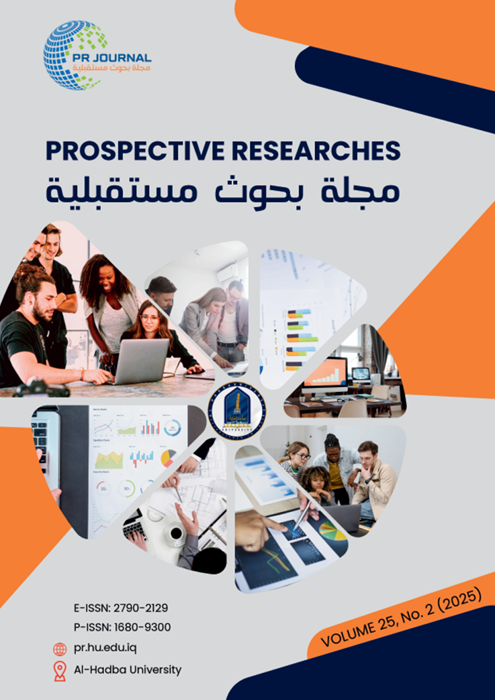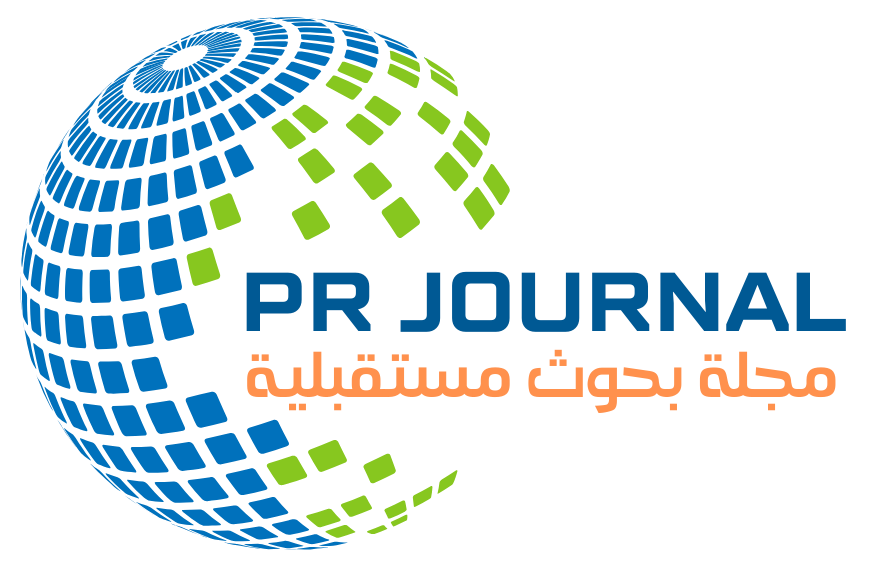Measuring the effect of Artificial Intelligence Factors on Consumer Behavior
DOI:
https://doi.org/10.61704/jpr.v25i2.pp25-31الكلمات المفتاحية:
Artificial Intelligence، Consumer Behavior، Smart PLS، Customer Satisfaction، Customer Serviceالملخص
Recent years have witnessed a radical transformation in the world of business and marketing thanks to the development of artificial intelligence technologies, which have significantly impacted consumer behavior by analyzing massive amounts of data and instantly responding to their changing needs. This research aims to examine the impact of artificial intelligence on consumer behavior by analyzing the role of smart recommendations, data protection, and trust in these technologies. A quantitative approach was used to collect data from University of Nineveh employees and analyze it using Smart PLS 4 to test hypotheses.
The results showed that artificial intelligence positively impacts consumer behavior with an impact factor of 0.641 and a t-value of 9.633, indicating a strong and significant impact. Data protection also showed an impact with a coefficient of 0.393 and a t-value of 3.561, while trust had a lesser impact with a coefficient of 0.262 and a t-value of 2.446.
The study confirms that artificial intelligence enhances the consumer experience, but it requires balancing marketing benefits with privacy protection. The research recommends that companies optimize their marketing strategies to maximize the benefits of these technologies.
المراجع
Ali, M., & Raewf, M. (2021). Bank Deposit Policy Analysis and its Ingredients for Success in the Kurdistan Region. Cihan University-Erbil Journal of Humanities and Social Sciences, 5(2), 28-32. https://doi.org/10.24086/cuejhss.v5n2y2021.pp28-32
Al-Delawi, A. S., Raewf, M., & S Jameel, A. (2023). The Voluntary Disclosure of Human Capital and Its Impact on the Market Value of Companies. Journal of Intercultural Communication, 23(1), 24-32. https://doi.org/10.36923/jicc.v23i1.53
Al-Delawi, A. S., Raewf, M., & Jameel, A. (2023). The Impact of Human Capital on a Company's Value: A Cross-Cultural Study. Journal of Intercultural Communication, 23(1), 24-32. https://doi.org/10.36923/jicc.v23i1.53
Babu, M. V. S., & Banana, K. R. I. S. H. N. A. (2024). A study on narrow artificial intelligence—An overview. Int. J. Eng. Sci. Adv. Technol, 24, 210-219. https://www.ijesat.com/ijesat/files/V24I0428_1714383466.pdf
Gold, A. H., Malhotra, A. & Segars, A. H (2001). Knowledge Management: An Organizational Capabilities Perspective. Journal of Management Information Systems, 18(1), 185-214. https://doi.org/10.1080/07421222.2001.11045669
Henseler, J., Ringle, C. M., & Sarstedt, M. (2015). A new criterion for assessing discriminant validity in variance-based structural equation modeling. Journal of the academy of marketing science, 43, 115-135. https://doi.org/10.1007/s11747-014-0403-8
Haleem, A., Javaid, M., Qadri, M. A., Singh, R. P., & Suman, R. (2022). Artificial intelligence (AI) applications for marketing: A literature-based study. International Journal of Intelligent Networks, 3, 119-132. https://doi.org/10.1016/j.ijin.2022.08.005
Hair, J.F., Sarstedt, M., Hopkins, L. & Kuppelwieser, V.G. (2014). Partial least squares structural equation modelling with R. Practical Assessment, Research and Evaluation, 21(1), 1–16. doi: https://doi.org/10.1108/ebr-10-2013-0128.
Kumar, V., Ashraf, A. R., & Nadeem, W. (2024). AI-powered marketing: What, where, and how?. International Journal of Information Management, 77, 102783. https://doi.org/10.1016/j.ijinfomgt.2024.102783
Li, Y., Zhong, Z., Zhang, F., & Zhao, X. (2022). Artificial intelligence-based human–computer interaction technology applied in consumer behavior analysis and experiential education. Frontiers in Psychology, 13, 784311. https://doi.org/10.3389/fpsyg.2022.784311
Massoudi, A. H., Birdawod, H. Q., & Raewf, M. B. (2023). Personal digital marketing influence on successful marketing campaign in today’s digital age. Cihan University-Erbil Journal of Humanities and Social Sciences, 7(1), 158-165. https://doi.org/10.24086/cuejhss.v7n1y2023.pp158-165
Madanchian, M. (2024). The Impact of Artificial Intelligence Marketing on E-Commerce Sales. Systems, 12(10), 429. https://doi.org/10.3390/systems12100429
Moor, J. (2006). The Dartmouth College artificial intelligence conference: The next fifty years. AI magazine, 27(4), 87-87. https://doi.org/10.1609/aimag.v27i4.1911
Omeish, F., Al Khasawneh, M., & Khair, N. (2024). Investigating the impact of AI on improving customer experience through social media marketing: An analysis of Jordanian Millennials. Computers in Human Behavior Reports, 15, 100464. https://doi.org/10.1016/j.chbr.2024.100464
Rashid, A. B., & Kausik, A. K. (2024). AI revolutionizing industries worldwide: A comprehensive overview of its diverse applications. Hybrid Advances, 100277. https://doi.org/10.1016/j.hybadv.2024.100277
Raewf, M. B., Mahmood, Y. N., & Jaafar, A. J. (2021). The Impact of People in Cooperation on Cooperative Management of the Private Sector. UKH Journal of Social Sciences (UKHJSS), 5(2).
Raewf, M. B., Thabit, T. H., & Jasim, Y. A. (2021). The relationship between the elements of marketing mix and consumer behavior during environmental uncertainty. Cihan University-Erbil Journal of Humanities and Social Sciences, 5(1), 50-55. https://doi.org/10.24086/cuejhss.v5n1y2021.pp50-55
Teodorescu, D., Aivaz, K. A., Vancea, D. P. C., Condrea, E., Dragan, C., & Olteanu, A. C. (2023). Consumer trust in AI algorithms used in e-commerce: A case study of college students at a Romanian public university. Sustainability, 15(15), 11925. https://doi.org/10.3390/su151511925
التنزيلات
منشور
كيفية الاقتباس
إصدار
القسم
الرخصة
الحقوق الفكرية (c) 2025 مجلة بحوث مستقبلية

هذا العمل مرخص بموجب Creative Commons Attribution-NonCommercial-NoDerivatives 4.0 International License.
Copyright © 2025 by the authors. This work is licensed under a Creative Commons Attribution-NonCommercial-NoDerivatives 4.0 International License (CC BY-NC-ND 4.0). You may not alter or transform this work in any way without permission from the authors. Non-commercial use, distribution, and copying are permitted, provided that appropriate credit is given to the authors and Al-Hadba University.







